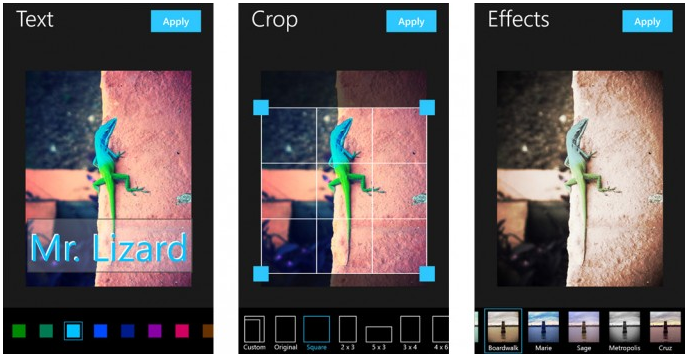In the modern day age of technology, the use of high-powered professional Canon cameras is no longer the only devices that can archive scenic and inspirational photos. Today, new generations of smartphones have changed the notion of traditional photography. Their easy to carry and fully functional editing features have increased its popularity than buying overly expensive bulkier DSLR cameras. But one huge advantage that these devices have over the traditional ways is simply the idea of photo-editing and photo-sharing instantaneously. Apps such as Instagram, Facebook, Twitter, Pinterest, and other various social media properties have become a huge game changer in producing quality and likable photos. There indented purpose of posting to family and friends have forced companies such as Apple and Samsung to improve the quality of their cameras with fully functionally professional editing features.
Now, it is no surprise that most people underestimate the capabilities of smartphone cameras, especially to the older generation. When camera applications came to light for the phone back in the early 90s, it was simply meant to capture a photo; nothing more, nothing less. Today, photo-editing applications on our smartphones have improved dramatically in quality making it easier than ever to enhance, crop, remove, add, and filter your photos on the spot. These various tweaking within your settings such as angling, lighting, enhancing, or filtering your photos truly transforms these pictures into memories and moments of a special time and place.
Below, you will find six handy tips and guides in how to utilize your smartphone camera to the best of its abilities. By leveraging these tools, you, as well as many others, will be able to produce high quality photos just like a professional.
1. Know Your Smartphone Camera Setting
This is a simple step people do not take the time to understand. One thing you need to understand is that if you want to produce remarkable stunning photos, than you should not rely on your phone’s default auto mode. Think of the default mode as a simple idea of opening a notebook with a blank sheet of paper. It is your job to figure out what you want to capture. To do this, tap on where you want the phone to focus on to give you a sharper clearer image. In addition, various smartphones have other alternative settings. Look at the options of focusing, exposure, and white balance. These specific features can be the difference from 5 likes to 100 likes.
2. Play with the Resolution
The higher the resolution of your photo, the better the quality you will produce. When taking images with your smartphone, try and go as close as possible to the subject rather than zooming in when you take your shot. Zooming lowers the resolution, quality, and overall subject of what you are trying to take. In addition, play with the overall settings such as exposure, focus, and lighting to improve your resolution of your photo. One problem you should note is that higher resolution photos can eat up space on your phone. The best way to handle this problem is one of two ways: 1. Post then delete. As it sounds, posting your photo online and deleting it after can help with the storage issue. If, however, you want to save the photo, try saving it externally such as on your computer, the cloud, or an external drive.
3. Selfies vs. Photos
This one should be obvious, but the back camera of your smartphone generally provides higher resolution specs than the front camera. Unless you are taking selfies, it would be your best intention to utilize the back camera for higher quality photos.
4. Play with the Lighting
One of the biggest problems people have when taking photos is lack of lighting. With the right amount of lighting, your subject can look livelier, especially with a welcoming environment. Keep in mind, natural lighting is definitely more preferred. If you are taking photos indoors, try standing near a window or a door where there is an ample amount of lighting. This can create a certain effect that can highlight various characteristics and features in your subject.
5. Rule of Thirds, Leading Lines, and Framing
Composition, composition, composition! Many amateur photographers think it is a simple quick snap and edit. To take attractive welcoming photos, learn the basic composition of the Rule of Thirds, leading lines, and framing. Think of this in angles. Shooting at different angles can enhance your subject in the best of ways. In addition, it also presents different perspectives that can provide new meaning to the overall theme of the photo.
6. Photo-Editing Applications
In addition to your smartphone settings, try looking into various photo-editing applications. At times, there are things that can be controlled and manipulated simply through these smartphone applications. For example, many people use these apps to enhance their photos by filtering the lighting and setting like in Instagram or Facebook. In addition, play around with the settings. Similar to your smartphone settings, your photo-editing application settings provides various tips that can change the contrast, structure, brightness, warmth, saturation, color, filtering settings, fading, shadowing, and much more. Begin by playing around with it and seeing which features best portray the theme of your photo.
